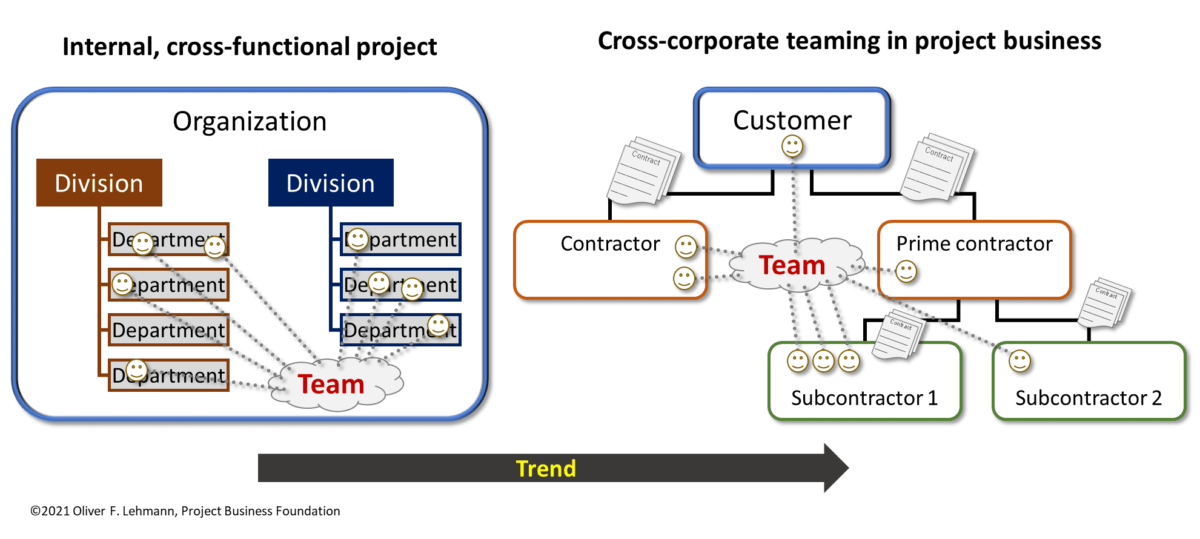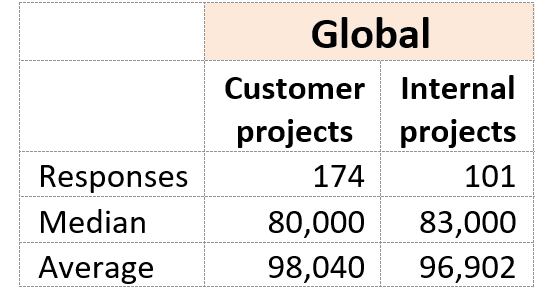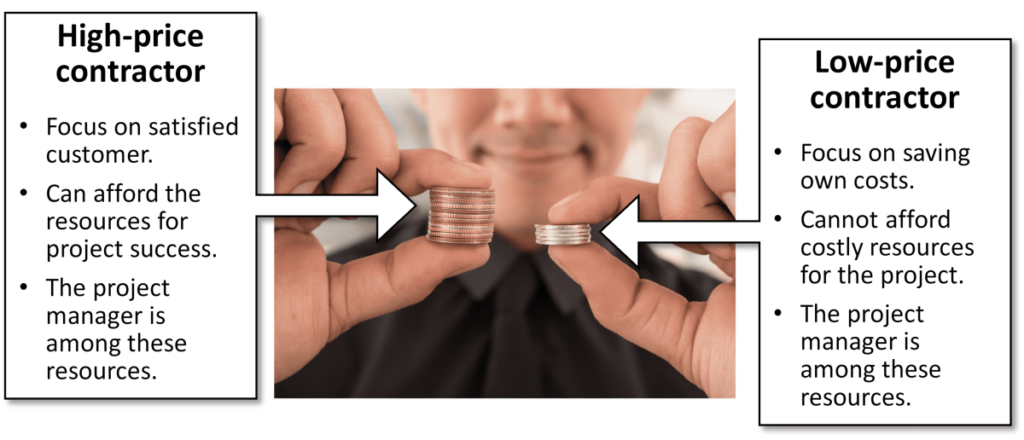
Customer Projects vs. Internal Projects
2018 Income Report
On this page: Summary ••• 1. Two Types of Projects ••• 2. Survey Results ••• 3. Discussion ••• 4. About the data

Summary
A survey shows at first glance that project managers in internal projects and in customer projects earn similar income on a global scale. However, digging deeper into the details, a surprising difference gets revealed
How to reference this page:
Project Business Foundation (2018) Income Report: Customer vs. Internal Projects, June [Online]. Available from: https://project-business.org/research/report-income-comparison-2018 (Accessed: ## #### 202#).
Note: The study has been repeated in July/August 2022. The results can be found here.
Links
- Detailed downloadable report
- 2022 Income report (repetition, short version), online – Detailed downloadable report

1. Internal Projects and Customer Projects
Internal Projects
The project is embedded inside the organization to bring about deliverables that the organization is interested in. Performing and receiving organization are the same legal entity.
Typically, Project managers in internal projects have the responsibility to manage cost centers.
Customer Projects
Project managers in customer projects have the responsibility to manage temporary profit centers for contractors as part of cross-corporate project business. They are hired on contractor side to:
- Make the customer happy
- Make the project profitable
- Protect the contractor’s liquidity


2. The Survey: What Do Project Managers Earn?

Table 1: Income comparison, global numbers
We gathered data during a survey performed in May 2018. After clearing out responses that said that their project setting is different and also obviously implausible responses, 275 responses were left for analysis, out of which 174 said that they were in customer projects, while 101 had reported that they managed internal projects.
On the first glance, there seemed to be no relevant difference between the income numbers reported by the two groups. The median numbers seemed to benefit internal projects, while for the average numbers, which are more accurate but also more sensitive to bias from outliers, customer projects seemed insignificantly ahead.
Overall, one can conclude that no significant difference could be found on a Global level.
Digging deeper, however showed a surprising pattern.
The picture is changing when one relates the income numbers to the various regions from which the participants came. Table 2 shows the results for those regions from which at least 5 persons from both project types responded.
There seems to be a consistent picture: In high-paying regions like North America and the EU, project managers in customer projects reported higher payments. In medium and low paying regions, project managers in customer projects reported lower average income numbers than their colleagues in customer projects.

Table 2: Income comparison by regions

3. Discussion of the Results of the Survey
The numbers in Table 2 seem to reflect different expectations in world regions, when companies decide to procure project work:
FOR HIGHER PAYING REGIONS:
The dominant driving force for the buyer seems to be the tapping into contractors’ assets, such as:
- Skills and competencies
- Free capacity
- Tangible assets, such as equipment
- Management attention
In order to make these resources available, customers have to pay a price high enough that it will make it worthwhile for the seller to become the contractor.
In such a situation, the Buy option is chosen mostly to get things done by thoroughly competent contractors. The higher salaries that these contractors pay reflect their expectations of future profits from the projects.
FOR LOWER PAYING REGIONS:
In the regions where project managers in customer projects earn less than internal project managers, a much stronger consideration seems to be the objective to get project work done cheaply. Here, the contractor must be cheaper than the customer’s internal resources. The price pressure from the customer will then translate into lower earnings for the contractor’s staff, accepting that people will possibly work on the project with lower qualification and motivation.
In such a situation, the Buy option is chosen predominantly to get things done by cheap contractors. The lower salaries paid by these companies rather reflect their actual poor profitability and possibly also their poor liquidity.

Notes:
- A more detailed report can be accessed at:
https://www.academia.edu/38205452/The_Great_Talent_Gap_in_Project_Business_Management - The survey has been repeated in 2022.
Click here to see the results.

4. About the Data
- The data above refer to gross salaries, i.e., the money paid by the employer.
- Participants were members of the social networks LinkedIn and Facebook, who communicated in their profiles and in group memberships that they worked as project managers.
